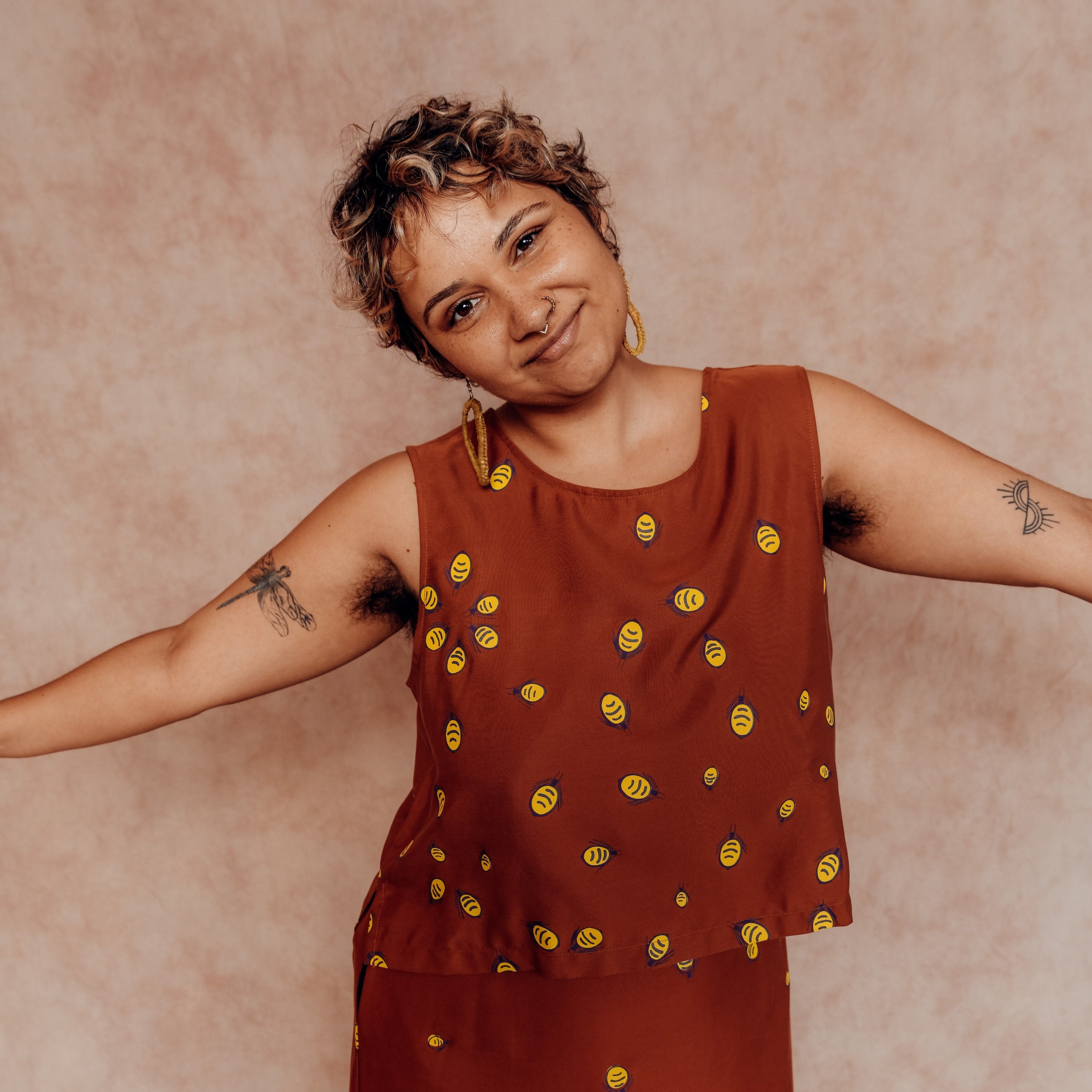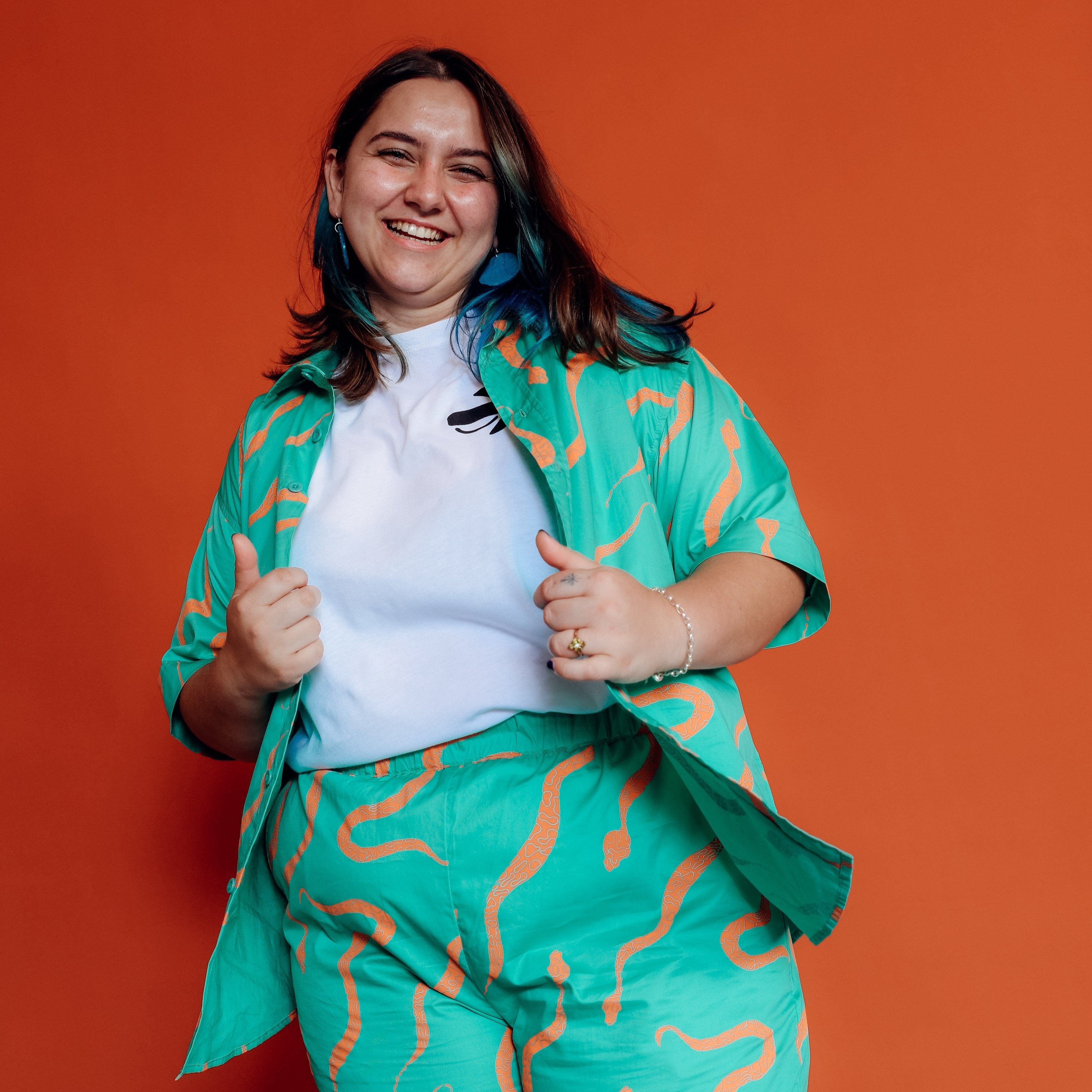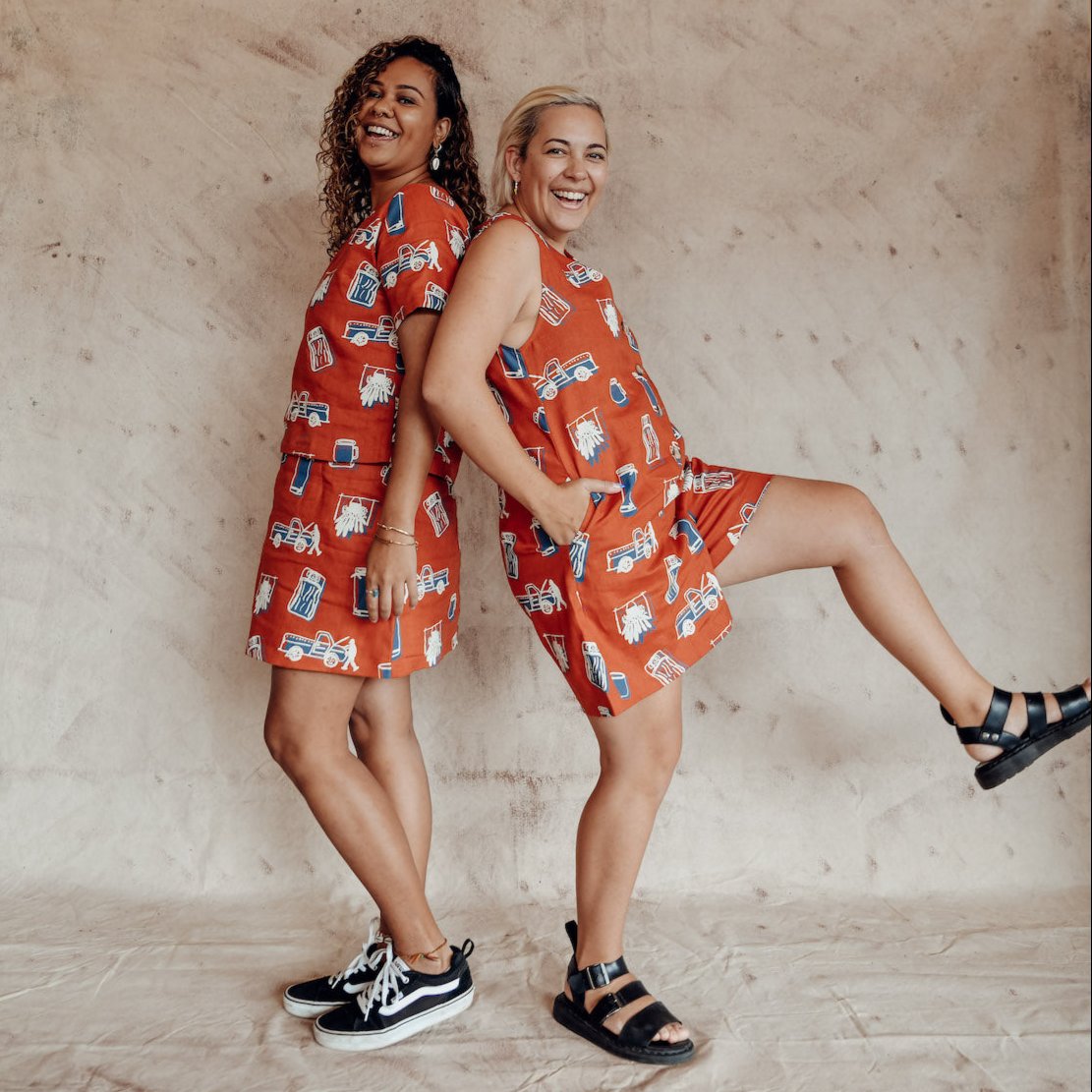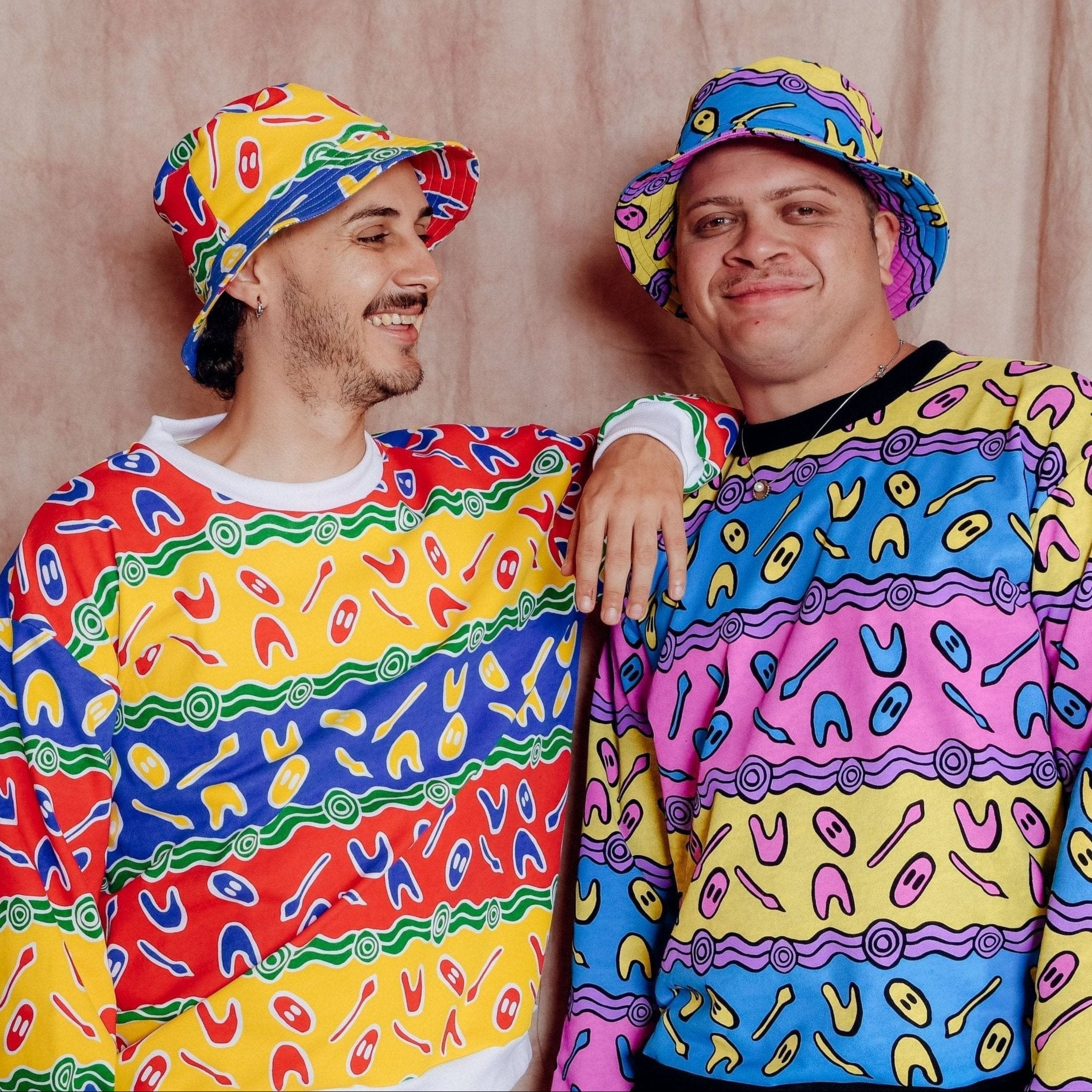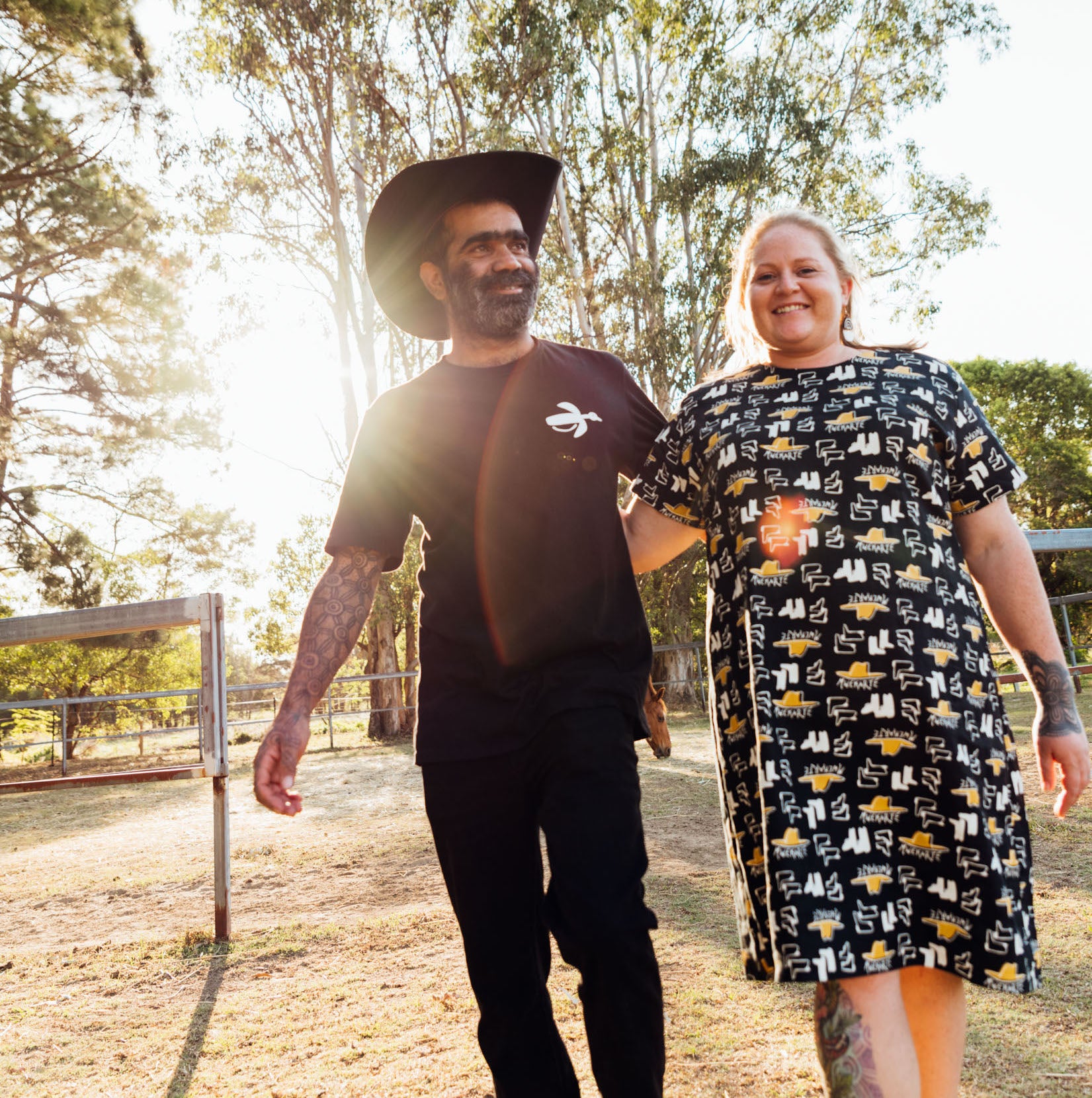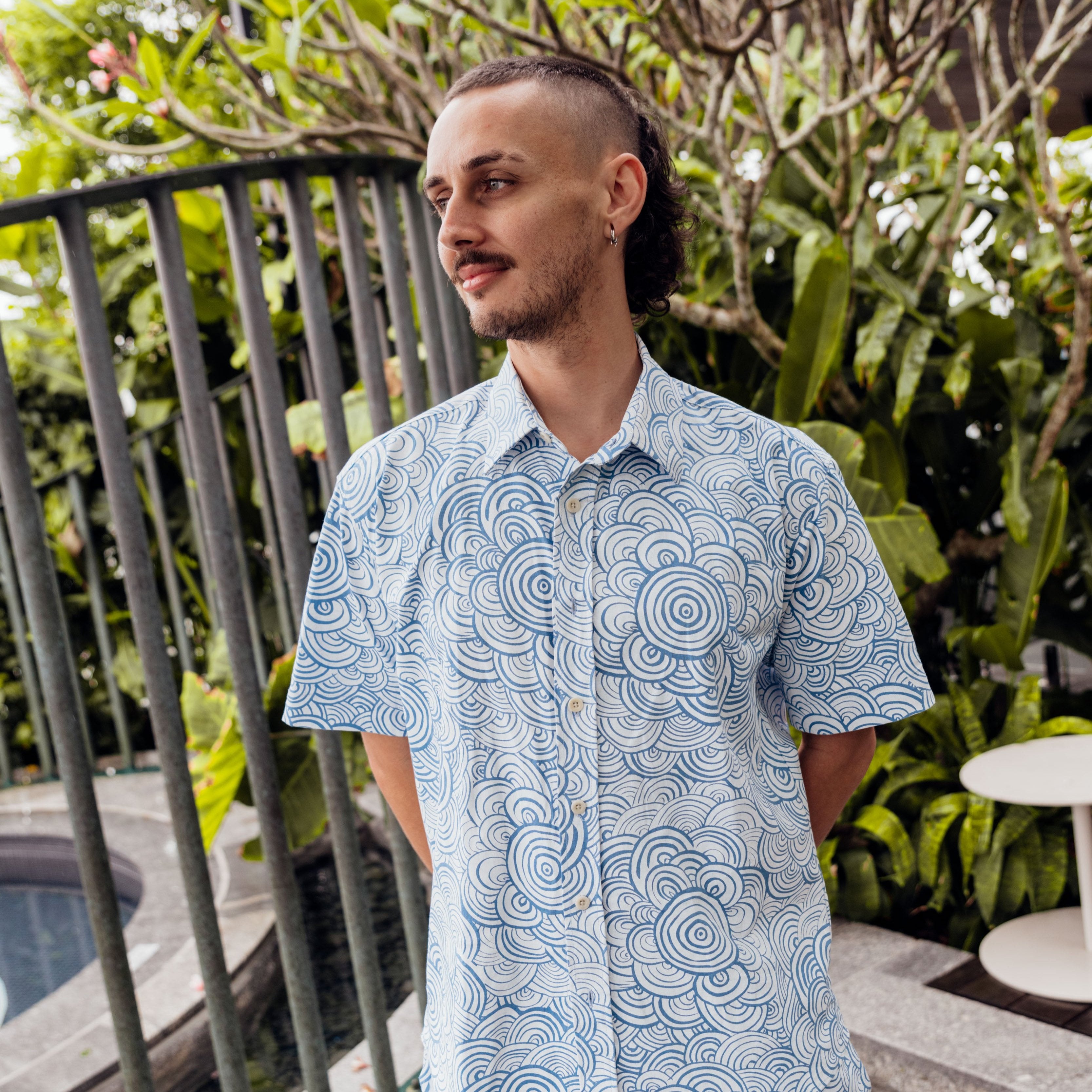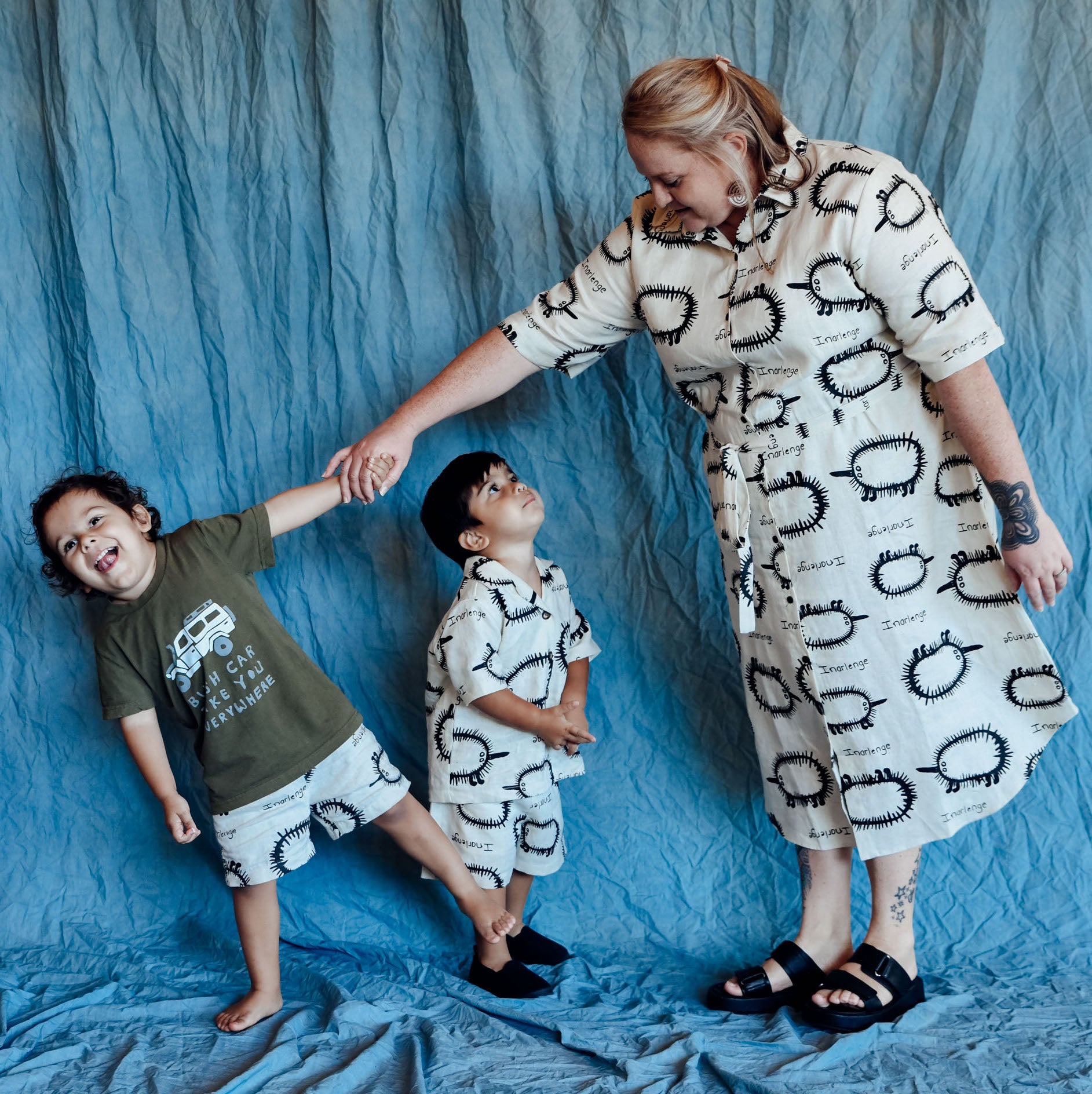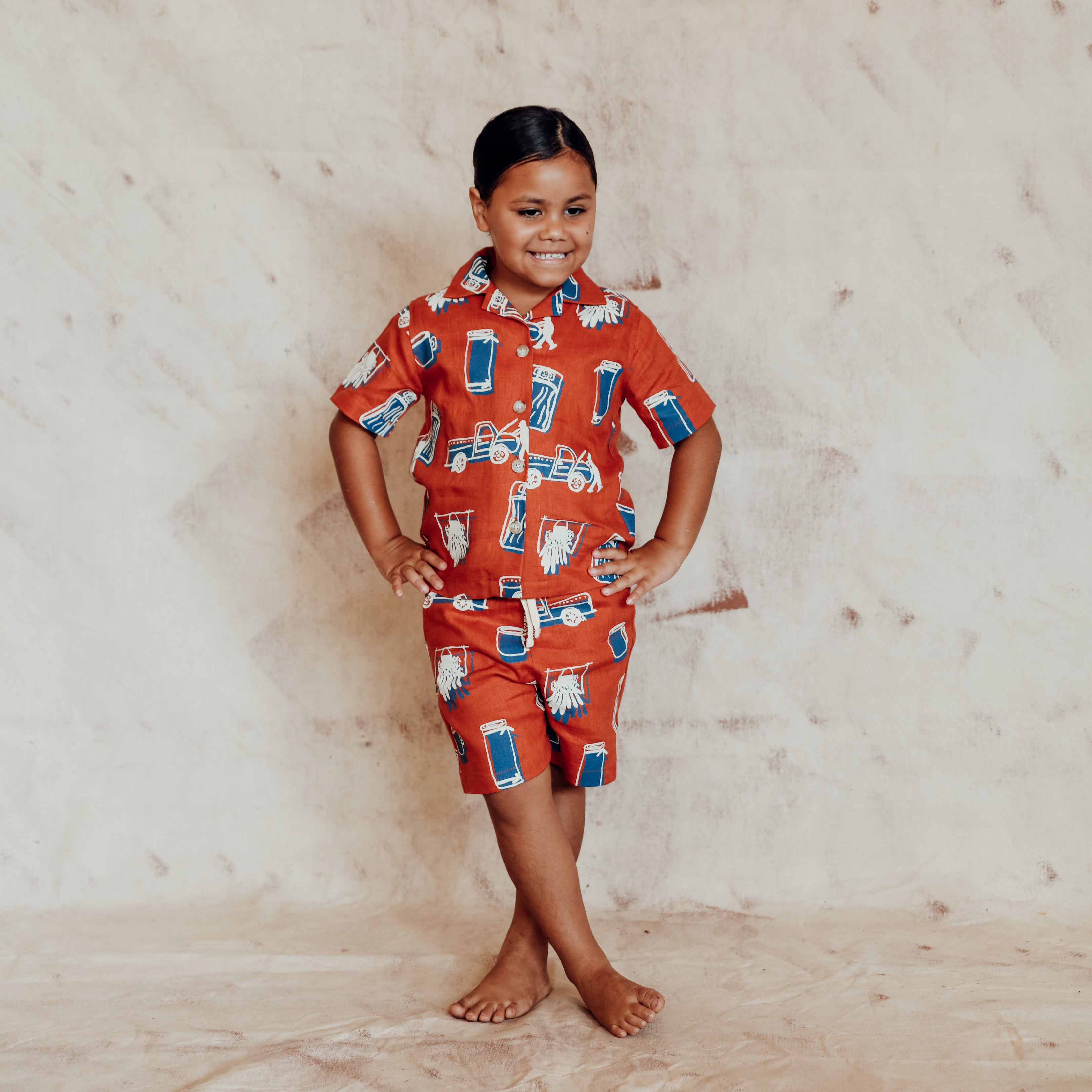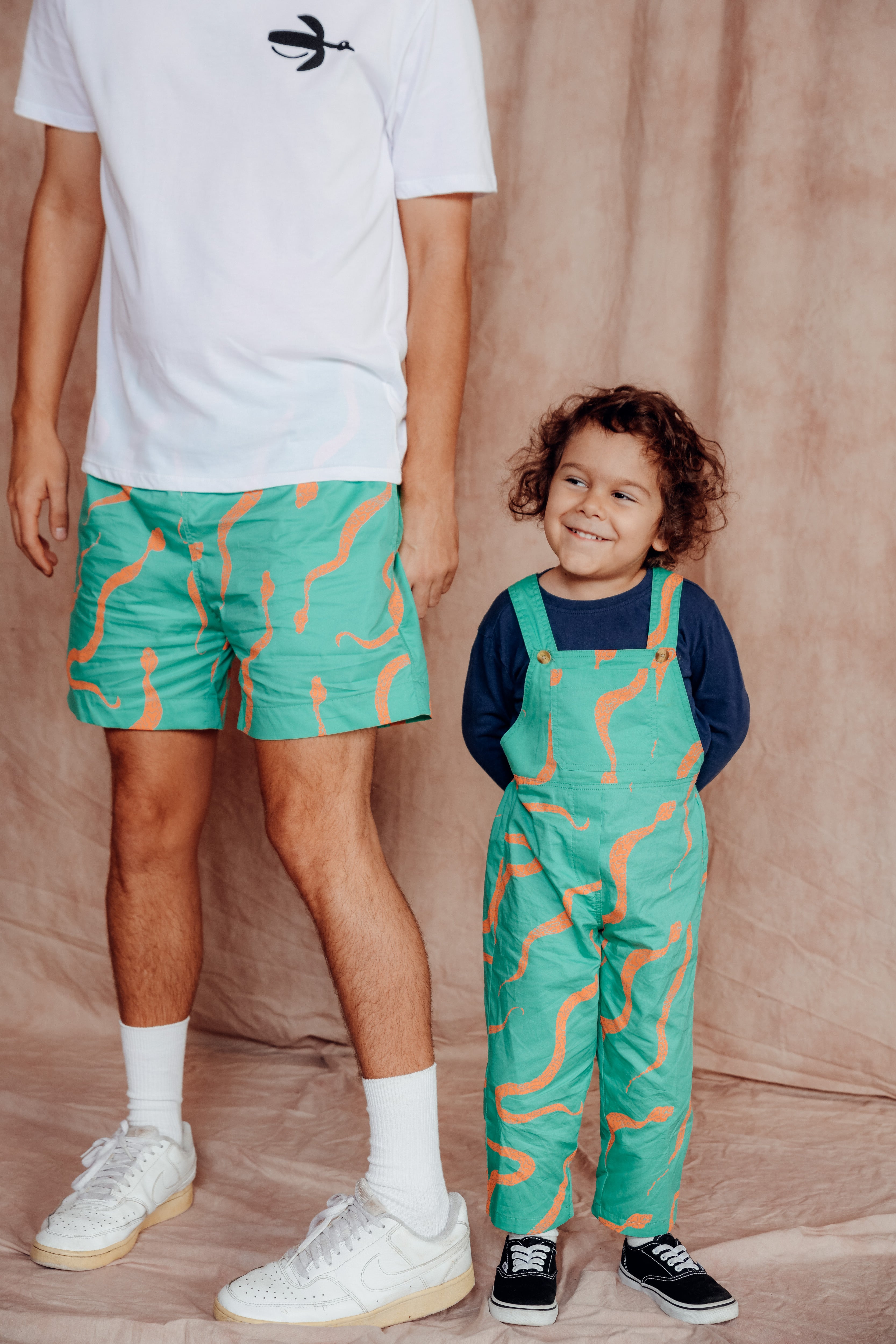The Ardyaloon collection comes from the Ardyaloon / One Arm Point community on Bardi / Jawi Country. It's 2500km north of Perth, two-and-a-half hours drive north of Broome, and is located on the tip of the Dampier Peninsula, in the remote Kimberley region of Western Australia.
We’ve just dropped the last print from the Ardyaloon collection so we wanted to take the opportunity to revisit each of the prints from this wonderful Country and celebrate the stories of the artists and their artworks.
Here we've pulled together some of our favourite moments photographing the Ardyaloon collection, with words from the artists themselves about the unique stories reflected in each print:

Birimbiri, Joongoon, Goorralgar (Bush Fruits) by Karen Morgan
"These are bush fruits that we grew up collecting and eating. Different berries. The Goorralgar - it's a little white fruit, and it has a sweet taste. Very small round white fruit. We just eat it as a fruit. Joongoon - when people have sore stomach and diarrhoea, they have that. Some are dry and bitter, depending on which tree it’s picked from. It can also be boiled or cooked on coals. The Birimbiri is sweet when it’s ripe; it’s a small, hard, round orange fruit. When they start to get ripe they swell up - they look like they glow. Bright orange red berries."

Gaanyji (Shells) by Janine Mandijalu (pictured above) and Pauline Sampi
This is a collaborative design created by Pauline Sampi and Janine Mandijalu. Pauline is Janine’s mum’s first cousin; she’s a mum to Janine.
“The shells that we did – the sketching – they’re the type of food that we live off here, from the ocean; the reef. They’re more of a treat; we just get it when we feel like eating that!”

Miinimbi (Whale) by Jacqui Hunter
"You can see the whales (Miinimbi) from our family block on my father’s country, Hunter’s Creek, where the salt water creek runs into the Indian Ocean. It’s beautiful there. You only see the whales once a year, when the dugongs are moving out, and the ‘marry turtles’ are moving in for mating season. This is a special time of year for everyone – because if we catch a marry turtle (the ones with eggs), we have a big feast and share it with all the family!"

Joodarn (Crayfish) Manboor (Ghost Crab) & The Moon by Eddie James
"This is my design about catching crabs and crays. It’s also got the new moon, and the half moon. The moon tells you about the tides. We follow the moon. It tells us what we go fishing for, and when we should go fishing. We don't look at tide charts. There's a big tide – big springs – for the new moon."

Joomoo Tree by Rowena Mouda
"I drew the seeds and the flowers of the bauhinia tree – Joomoo tree in Bardi language. I drew it because it was in season at the time; it was flowering and fruiting. I like the Joomoo tree because of the many significances and uses it has. We can use the wood to burn; it's good wood for cooking food on. We also suck the honey that comes from the flower pods. The birds also love it."

Gaanyji (Shells) by Jacqui Hunter
"Shells are everywhere along the beaches of Bardi Country. When I’m walking on the beaches, I love looking for shells. I find many different shells washed up onto the beaches. In Bardi language these are the Goowid (Chambered Nautilus Shell), the Goorranybood (Mud Whelk Shell), the Iddol (Murex Shell), the Rawoorr (Razor Shell), and the Dalga (Cowrie Shell)."

Gamaloon (Bush Pear) Bardi Language Story by Annette Sampi
"My mum was a linguist, she helped finish off the Bardi language dictionary that was started by her older brother and sister, which was published in the '90s. It’s part of my family history. My brother did all the pictures, and my mum came up with all the sentences to show how the words are used."

Manboor (Ghost Crab) by Eddie James
"In this design we’ve got Manboor – the ghost crab. Manboor dig holes up on the sandy beach and we use them as bait to catch fish.
At full moon people go to the fish traps. They’ve been round way before my time – the old Bardi stone trap – people are still using it today! Mainly for fish or stingray. When the tide is low, the big rocks trap fish in."

"Dugongs come in and out of our waters depending on the season. They hang around for about three months; then when the whales come in, the dugongs move on out. At the same time the turtles start mating."

"Trees are everything to us: they help keep our local knowledge strong. When the Wongai blooms yellow flowers, we know stingrays are rich and ready for hunting. It’s hot when you go hunting for stingray, usually after the big wet (March / April)."

Odorr (Dugong) Diamond by Russel Davey
"My design is of an odorr (dugong) swimming through the water, viewed from above. In the old days, men would go hunting and would see the dust, and know it was a dugong feeding on the reef. It’s different from a stingray's dust."

Mangroves by Jody Wiggan
"My design reflects mangroves by the sea, ‘Nyordnyual Gaarra’ in Bardi language. Mangroves are important to me because they protect sea creatures and prevent erosion along the shoreline. Mangroves protect the land and people from waves and storms."

Aarli (Salmon) by Russel Davey
"This story is about the Aarli that runs in the cold time, ‘Barrgana’ season, when the westerly winds blow. They like the murky water and they like to chase and hunt the bonefish. You can spear them in the shallow waters or catch them with handlines and nets using bonefish as bait."

